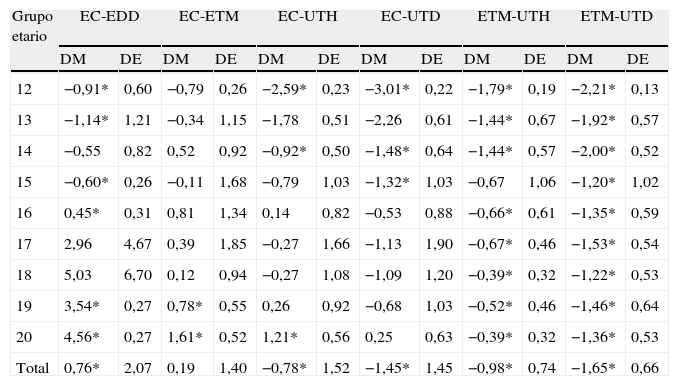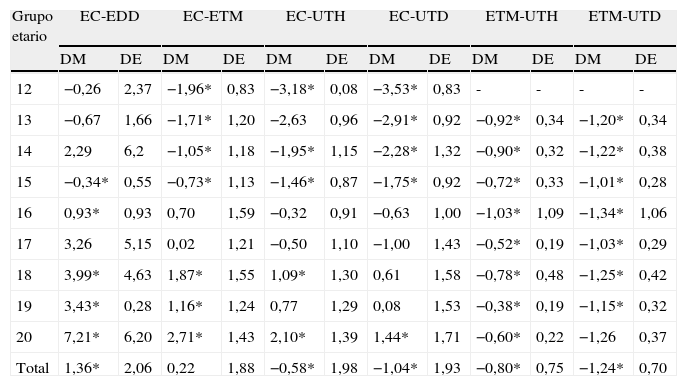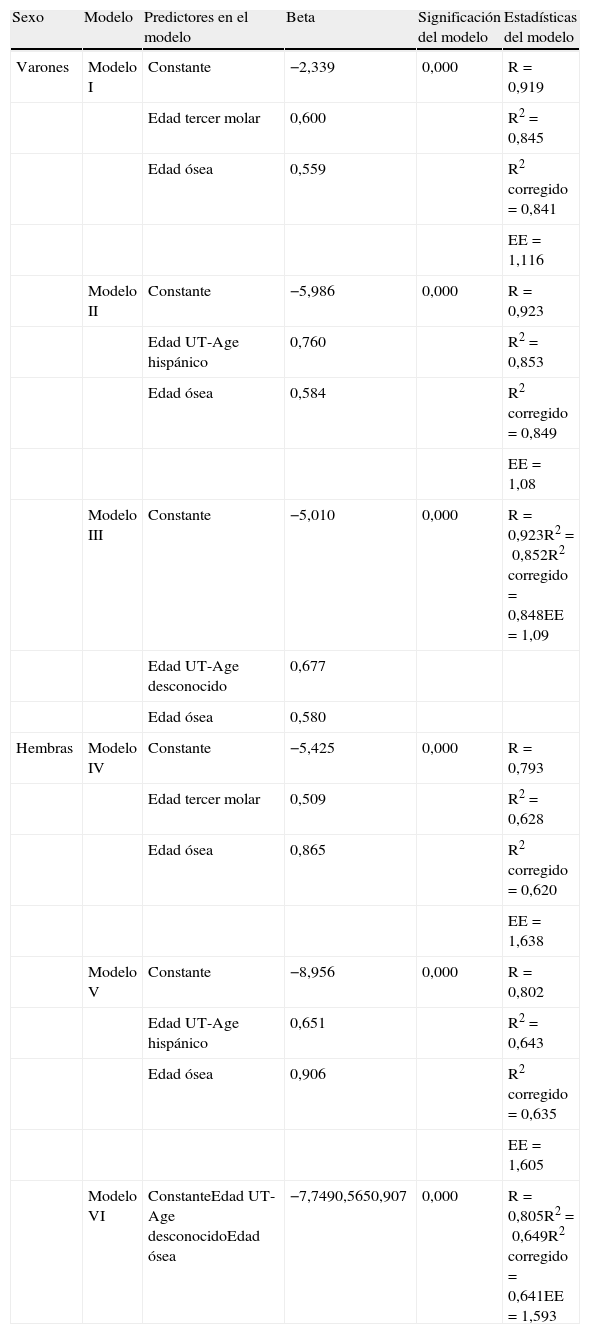El presente trabajo tuvo como propósito comparar la edad dental estimada mediante el desarrollo del tercer molar de venezolanos y la obtenida utilizando una herramienta computacional con una base de datos hispánica de Texas.
Material y métodosEsta investigación fue de tipo retrospectiva y observacional. Se evaluaron ortopantomografías de 169 individuos de ambos sexos, con edades entre 12-20 años. Se calculó la edad dental por el método de Demirjian et al. (EDD), la edad dental por el tercer molar (ETM) utilizando los estadios de maduración de Demirjianet al., la edad dental por el software UT-Age con ancestro hispánico (UTH) y desconocido (UTD).
ResultadosLas diferencias de media entre las variables evidenciaron una subestimación de la edad cronológica (EC) con relación a la EDD y ETM desde los 16 años, en ambos sexos. Las edades calculadas por el UT-Age sobreestimaron la edad en la mayoría de los grupos etarios. Al comparar la ETM con la UTH y la UTD, se observó una consistente sobreestimación de la edad. Considerando la media de la diferencia entre la EC y las edades estimadas, se observó que la EMT presentó la menor diferencia (varones 0,195 p=0,225; mujeres 0,220 p=0,276) cuando se comparó la ETM con las edades calculadas por el software, la UTH mostró la menor diferencia (varones -0,980 p=0,001; mujeres -0,805 p=0,001).
ConclusiónLa edad estimada mediante el UTH fue más próxima a la edad real que la obtenida por el UTD.
The purpose of this study was to compare the dental age estimated by the development of the third molar in Venezuelans with the age obtained using a computational tool with a Texas Hispanic database.
Materials and methodsRetrospective observational stury. 169 ortopantomographs of Venezuelan individuals of both sexes, aged 12-20, were evaluated. Dental age was calculated by using the Demirjian et al. method (DAD), third molar dental age (TMA) using the stages of maturation of Demirjian et al., as well as the UT-Age software which includes Hispanic(UTH) and unknown (UTU) ancestress.
ResultsThe mean differences between the variables showed an underestimation of the chronological age (CA) in relation to the DAD and TMA of 16 years in both sexes. The ages calculated by the UT-Age, overestimated age in most age groups. By comparing the TMA with UTH and UTU, there was a consistent overestimation of age. Considering the mean of the difference between the CA and the estimated ages, it was observed that the TMA had the lowest difference (p=0.225 p=0.195 males, females 0.220 p=0.276). When TMA ages were compared with the one calculated by the software, UTH showed the smallest difference (p=0.001 p=-0.98 males, females -0.80 p=0.001).
ConclusionThe estimated age using UTH was closer to the real age than the one obtained with UTD.
Artículo
Comprando el artículo el PDF del mismo podrá ser descargado
Precio 19,34 €
Comprar ahora










